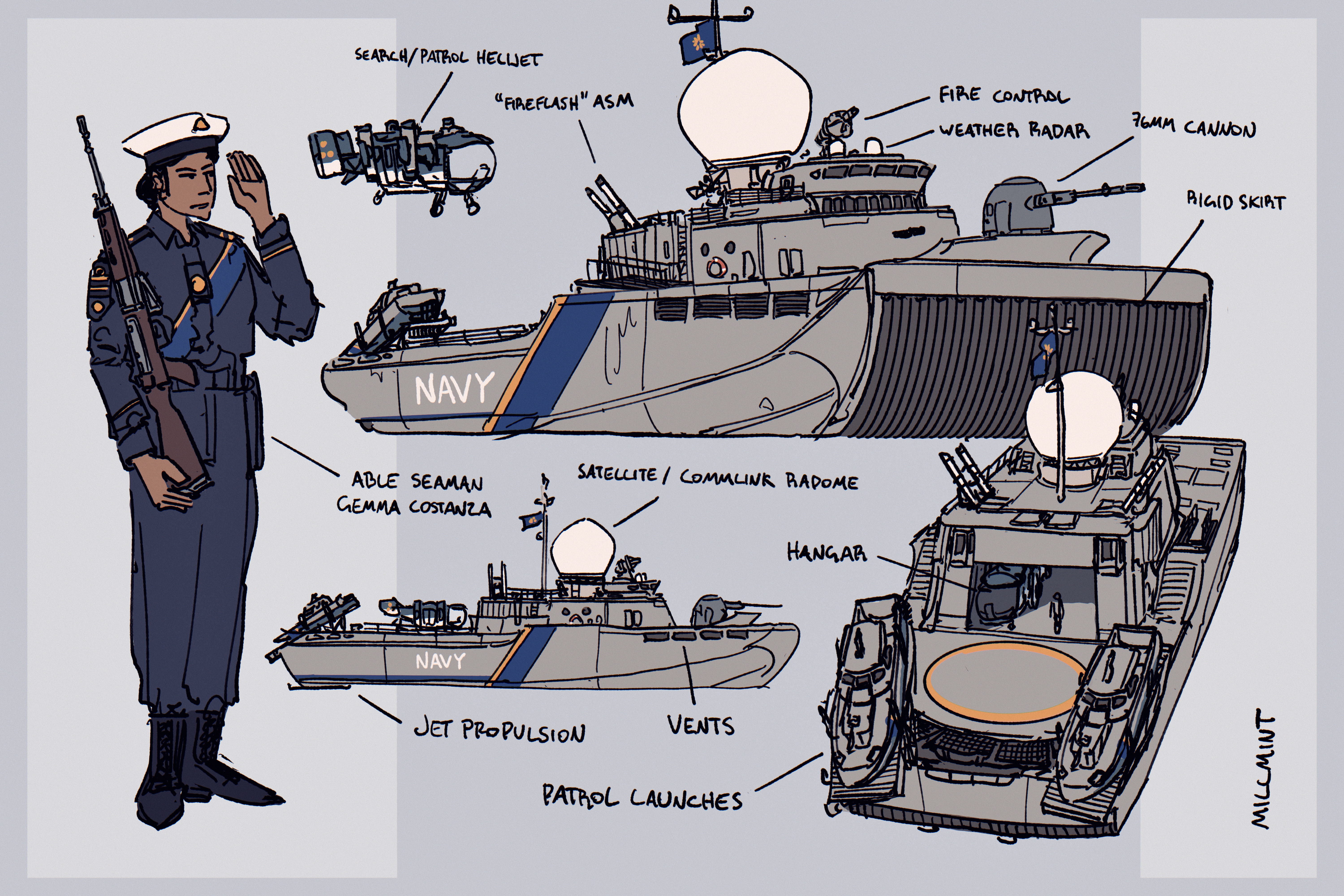NEW Story: Cocktail
Hound-class Surface Effect Hovercraft

The Hound-class is a vessel in Vekllei.
| Hound-class Surface Effect Hovercraft | |
|---|---|
| Class | No. 1 Hound-class |
| Type | Surface Effect Hovercraft |
| Built | 2055-present |
| Home Station | N.S. Antigua |
| Crew | 35 |
| Displacement | 860 tonnes |
| Length | 60 meters |
| Speed | 85 knots |
| No. in service | 16 |
The Hound-class surface effect hovercraft is a type of littoral sidewalled hovercraft of the Marine Services of Vekllei. It serves an important role in Vekllei’s archipelago maritime regions as the primary disaster response class of the Littoral Services. It is well-suited to this purpose, since it carries different kinds of search vehicles and powerful radars. In this capacity, it serves as a mothership for search and rescue missions, but in the Caribbean can also serve as a fast and well-armed interceptor in anti-piracy and anti-smuggling operations.
Like most smaller littoral service vessels, the Hound-class carries No. 2 Fireflash anti-ship missiles for purposes of national defence and a 76mm Vanguard cannon for everything else. This computerised gun is a mainstay of the littoral and maritime services and can serve in limited air-defence roles.
More formidable in its armament is its complement of patrol launches and helijets. It can carry two of each, which provides a vessel of its size remarkable capabilities. Although the power and armament of the helijets are limited by the size of the hangar, they are capable of being equipped with anti-submarine sonar buoy systems and No. 8 Magma torpedoes. More commonly, bubble-dome patrol helijets are assigned instead to aid the Hound-class’s primarily roles in maritime patrol and search and rescue. The patrol launches are of the Harbour-class and are only armed with crew-operated bow machine guns. Their primarily purpose is rescue, maritime policing and to support dive operations.
The Hounds are hovercraft, and so have an inflatable (though rigid) skirt that raise the hull of the vessel almost entirely above the waterline. This allows it to attain incredible operational speeds of nearly 85 knots (155km/h), though they are limited in capability during rough seas. They can partially beach themselves to make offloading vehicles easier, but are not able to move freely across land like a regular hovercraft. They are powered by a regular NMPR marine reactor, which also supplies power to the pumps that inflate the air cushion.